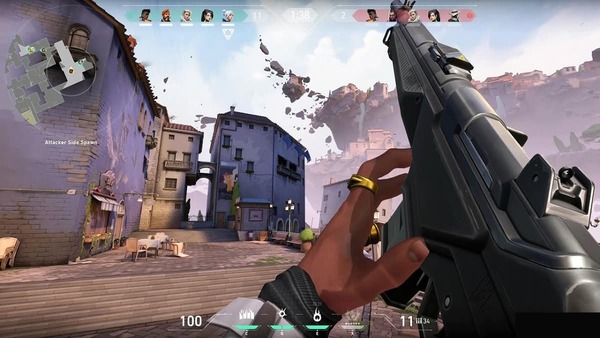Popular Now
Garena’s Free Fire Max offers a graphically enhanced and immersive battle royale experience compared to its predecessor. However, despite its visual upgrades and enriched gameplay, one persistent issue continues to challenge players—the matchmaking and ranking system. Many users voice frustrations about being matched with higher-tier opponents, unbalanced teams, and a rank system that doesn’t always reflect skill. In this article, we’ll explore the intricate mechanics behind Free Fire Max’s matchmaking and ranking logic, analyze player struggles across tiers, and provide insights into improving the experience. This deep dive covers ten vital areas to help players and developers better understand and possibly fix what’s broken.
1. Understanding the Ranking System in Free Fire Max
How the Rank Tiers Work
Free Fire Max features a tiered ranking system consisting of Bronze, Silver, Gold, Platinum, Diamond, Heroic, and Grandmaster. Players earn rank points (RP) through kills, placements, and performance.
Point Allocation Mechanics
Points are not only awarded for kills or victories but also based on:
-
Survival time
-
Damage dealt
-
Team contribution
This means even a low-kill game can result in a high RP if strategic gameplay is maintained. However, the problem begins when this system interacts with matchmaking.
2. Matchmaking Logic: Is It Truly Skill-Based?
Tier vs. MMR (Matchmaking Rating)
The game doesn’t match players purely by rank tier; instead, it uses a hidden MMR system that estimates your skill level. This leads to:
-
Silver players facing off against Diamond-level players
-
Unfair team balancing
-
Rapid MMR changes after just a few matches
The Resulting Imbalance
Because your MMR fluctuates faster than your visible rank, you often face opponents outside your tier—causing frustration, especially during solo queue.
3. The Struggle of Solo Queue Players
Unfair Team Composition
Solo players often find themselves grouped with random teammates who:
-
Disconnect early
-
Don’t communicate
-
Have poor game sense
This mismatch affects performance and subsequently RP gains.
Lack of Synergy and Coordination
Unlike premade squads, solo players can’t coordinate complex strategies like pinching enemies or rotating through cover zones—putting them at a tactical disadvantage.
strategies like pinching enemies or rotating through cover zones—putting them at a tactical disadvantage.
4. Rank Inflation and Devaluation
Too Many Diamond Players
Due to relatively easy progression until Diamond, many players crowd into the mid-to-high tiers, making:
-
Matchmaking slower
-
Opponents harder than expected for your visible rank
Impact on Competitive Integrity
This inflation undermines the competitive ladder, making ranks less meaningful and progression less satisfying.
5. The Issue of Smurfing and New Accounts
Smurfs Are Breaking Match Balance
High-rank players create new accounts (smurfs) to:
-
Farm bots
-
Win easily
-
Troll low-rank lobbies
This not only ruins matches but also discourages new players from continuing.
System Doesn’t Recognize True Skill Fast Enough
The hidden MMR system takes time to detect smurfs, during which they dominate early matches—distorting the matchmaking ecosystem.
6. How Bots Skew the Ranking Experience
Bots in Lower Tiers
Bots are common in Bronze and Silver matches, offering:
-
Easy kills
-
Artificial RP boosts
But once you progress, the skill jump becomes sharp, as bots disappear.
False Sense of Improvement
Players overestimate their ability early on, leading to demoralization when they begin to lose heavily in mid-tier matches.
7. Team Rank Disparity in Squad Mode
Mixed-Rank Teams
Often, a squad has a mix of Gold and Diamond players. The match then gets balanced against the highest-ranked member, making it unfair for lower-ranked teammates.
Unbalanced RP Distribution
Even if the team wins, lower-rank players earn fewer RP, while a loss results in a greater penalty for everyone—disincentivizing mixed-rank play.
8. Penalty System: Encouraging or Discouraging?
Too Harsh on Low Performers
A single poor game—especially with early death—can result in:
-
Huge RP loss
-
Drop in visible rank
-
Negative mental impact
No Protection for Consistent Players
There’s little buffer for players who usually perform well but have a few bad matches, unlike other games that use a performance-weighted decay system.
9. Strategies to Survive the Current System
Adapt to the Meta
To climb effectively despite flawed matchmaking, focus on:
-
Character synergy (e.g., Alok + Wukong for heals and stealth)
-
Passive play until the final circles
-
Map knowledge and smart rotations
Suggested Team Composition
| Role | Character | Purpose |
|---|---|---|
| Support | Alok | Healing aura |
| Fragger | Chrono | Aggressive plays |
| Flanker | Kelly | Fast rotations |
| Recon | Moco | Enemy tagging |
Solo Rank Climb Tips
-
Use headphone for enemy sound cues
-
Avoid hot-drop zones
-
Master high-ground positions for better visibility
10. What Needs Fixing: Developer-Level Solutions
Transparent MMR System
Provide players with insight into:
-
Their current MMR
-
Why they’re matched with certain players
-
How to improve matchmaking quality
Tier-Based Restrictions
Avoid mixing too many ranks in the same lobby. Implement systems such as:
-
Ranked queue limits (e.g., Gold can only match Gold–Platinum)
-
Smurf detection and MMR spikes based on kill/death metrics
Reward and Penalty Rework
- Create a Performance-based rewards (e.g., surviving till top 5 even if not many kills)
- more forgiving system with:
-
Partial RP protection for consistent players
The ranking and matchmaking systems in Free Fire Max are more complex—and more flawed—than they appear. From hidden MMR mechanics and inflated ranks to team disparities and smurf issues, players encounter a range of frustrating hurdles while trying to climb. By deeply understanding these systems and implementing both strategic adaptations and developer-suggested reforms, the community can hope for a more balanced, fair, and competitive environment. Until then, climbing the ranks will continue to test not just player skill, but patience.


















